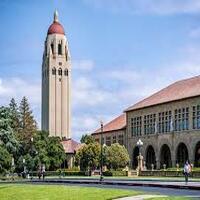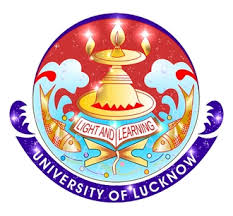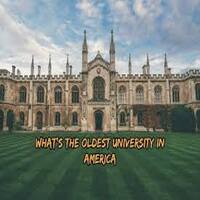1. Introduction: From Farm to Frontier of Innovation
Stanford University Founded in 1885 by Leland and Jane Stanford in memory of their only child, Leland Stanford Jr., Stanford University opened its gates in 1891 on what had been their Palo Alto stock farm (california.com, founders.stanford.edu). From these pastoral beginnings—hence the nickname “The Farm”—Stanford evolved into a globally renowned university, consistently ranked among the world’s top institutions, notable for its entrepreneurial spirit and academic excellence .
2. Founding Vision & Early Development
2.1 Memorial to a Son
Following their son’s tragic death in 1884, the Stanfords resolved that “the children of California shall be our children.” They established a coeducational, non-sectarian university aimed at combining practical usefulness with classical learning—tuition-free, open to all, and dedicated to public welfare (founders.stanford.edu).
2.2 Architectural Blueprint
Landscape architect Frederick Law Olmsted Sr.—celebrated for Central Park—was enlisted to sculpt the campus’s early design. Despite friction with Leland Stanford, his vision shaped the iconic Main Quadrangle, ringed by sandstone buildings and centered on Memorial Church (facts.stanford.edu).
2.3 Evolution in the Early 20th Century
Stanford’s first 30 years saw rapid institutional growth: founding the School of Medicine (1913), School of Education (1917), School of Engineering (1925), and the Graduate School of Business (1925) (timeline.vg). Tuition, initially free, was introduced in 1920, and an Honor Code adopted in 1921 (timeline.vg).
3. Campus & Architectural Landmark
3.1 Expansive Grounds
Stanford’s famously picturesque campus spans a remarkable 8,180 acres—one of the largest in the U.S.—housing roughly 630 buildings, 26,000 trees, and hundreds of plant species (facts.stanford.edu).
3.2 Architectural Style
Buildings are characterized by soft buff sandstone coupled with red-tiled roofs in a Romanesque and Mission Revival style, unified by covered arcades and quad-centered design (britannica.com).
3.3 Iconic Structures
- Main Quad & Memorial Church: The heart of the campus, architecturally and symbolically (britannica.com).
- Hoover Tower (1941): Home to the Hoover Institution, offering panoramic views (ohmyfacts.com).
- Lou Henry Hoover House: Built in 1920; later became the official residence of Stanford’s president and a National Historic Landmark (en.wikipedia.org).
4. Academic Structure & Research Profile
4.1 Schools and Curriculum
Stanford comprises seven major schools—Engineering; Humanities & Sciences; Business; Law; Medicine; Education; and the Doerr School of Sustainability (est. 2022). It awards 19 degree types (BA, BS, MA, MS, MBA, MD, PhD etc.) (britannica.com).
4.2 Research Powerhouse
- SLAC National Accelerator Lab: A world-class particle physics facility (britannica.com).
- Hoover Institution: Houses vast archives on war and peace since 1919 (britannica.com).
- AI, Bio-X, Energy Institutes: Cutting-edge interdisciplinary initiatives in AI, biology, energy, and earth sciences (mcadev.uccollege.edu.in).
With over $1.6–1.7 billion in annual research funding and 120+ research centers, Stanford is at the forefront of global academic innovation (mcadev.uccollege.edu.in).
4.3 Educational Model
Undergraduates enjoy a 6:1 student-to-faculty ratio, deep engagement in personalized research, and global study options across Europe, Asia, and beyond (britannica.com).
5. Innovation & Entrepreneurship
5.1 Frederick Terman & Silicon Valley Blueprint
Terman, Stanford’s dean and provost (1946–1966), forged ties between academia, government, and industry by securing defense contracts, launching a startup culture, and establishing Stanford Research Park in 1951 (investors.com).
5.2 Stanford Research Park
The first university-affiliated research park, spanning 700 acres with over 150 companies (HP, Tesla, VMware, etc.), is often dubbed “the epicenter of Silicon Valley” (en.wikipedia.org).
5.3 Startup Legacy
Stanford alumni and faculty co-founded Google, HP, Cisco, Yahoo, NVIDIA, Sun Microsystems, and hundreds more—documented in studies showing over 5,000 companies originating first contact with Stanford innovators (arxiv.org).
6. Student Life, Culture & Community
6.1 Residential & Social Life
Students can engage in 600+ clubs and 36 varsity sports, with community through arts, athletics, entrepreneurship, and public service programs like the Haas Center (stanford.edu).
6.2 Civic Engagement & Diversity
Initiatives like ePluribus Stanford promote dialogue, civic discourse, and free expression. Over 70% of undergraduates receive financial aid; families under $150k the previous tutition-free policy persists (stanford.edu).
6.3 Campus Traditions
From Big Game rivalry cheers to Tree Weekend festivities and scenic hikes like the Dish trail, Stanford blends intellectualism with vibrant traditions and natural beauty .
7. Selective Admissions, Rankings & Alumni Impact
7.1 Admissions
Extremely selective, Stanford’s Class of 2028 saw ~3.9% acceptance. Students demonstrate exceptional academic achievement, innovation, and leadership.
7.2 Global Rankings
Stanford reigns among top global universities, excelling in engineering, business, law, medicine, humanities, and the sciences .
7.3 Alumni Achievements
Stanford has produced 83 Nobel laureates, 27 MacArthur Fellows, 25 Turing Award winners, world leaders, Supreme Court justices, Olympians, astronauts, and pioneers like Sally Ride & Tiger Woods (worldsfacts.com).
8. Challenges & Modern Aspirations
8.1 Sustainable Growth
With the launch of the Doerr School (2022), Stanford commits to tackling climate change. Its campus-wide Sustainability initiatives and SESI project stand central to carbon footprint reduction (en.wikipedia.org).
8.2 Social Equity & Community Relations
Stanford seeks deeper partnerships with Indigenous communities (Muwekma Ohlone), reassesses diversity initiatives, and strengthens free speech and equitable treatment across campus (facts.stanford.edu).
8.3 Balancing Innovation & Ethics
The university navigates tensions between its commercial successes and civic responsibility—ensuring local benefits, ethical research, and open dialogue on tech’s societal impacts.
9. Conclusion: Stanford’s Enduring Mission
From its mission to make education “practically useful” to its role as an innovation powerhouse, Stanford remains defined by its pursuit of knowledge, public welfare, and global impact. Its synergy of scholarly excellence, entrepreneurial fervor, and civic responsibility continues to shape leaders, ideas, and progress worldwide.
Stanford at a Glance
| Feature | Highlight |
|---|---|
| Founded | 1885; opened 1891 |
| Campus Size | 8,180 acres; ~630 buildings |
| Student-Faculty Ratio | ~6:1 |
| Schools | 7 major schools |
| Research Funding | ~$1.6–1.7B annually |
| Research Centers | 120+ (SLAC, Hoover, Doerr, AI) |
| Alumni | 83 Nobel laureates, 27 MacArthur Fellows, Olympians |
| Startup Output | ~5,000+ spinoffs; research park w/ 150+ companies |
| Admissions Rate | ~3–4% |
| Nickname | The Farm |
| Campus Architect | Olmsted Sr.; Richardsonian Romanesque, Mission Revival |
Who Should Consider Stanford?
- Those seeking a rigorous interdisciplinary education integrated with global research and social responsibility.
- Future innovators wanting entrepreneurial infrastructure and pathways from lab to market—especially in tech, biotech, AI, climate.
- Students valuing a diverse, civic-minded community, with opportunities for activism, dialogue, and public service.
- Individuals drawn to balancing academic prestige with real‑world impact, in one of the world’s most dynamic intellectual ecosystems.




